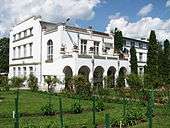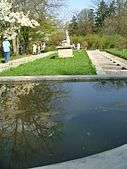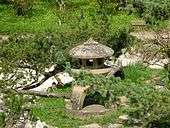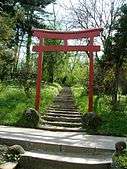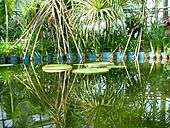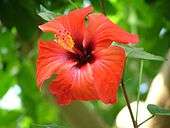Cluj-Napoca Botanical Garden
The Cluj-Napoca Botanical Garden, officially Alexandru Borza Cluj-Napoca University Botanic Garden (Romanian: Grădina Botanică Alexandru Borza a Universităţii Cluj-Napoca), is a botanical garden located in the south part of Cluj-Napoca, Romania. It was founded in 1872 by Brassai Samuel. Its director in 1905 was Aladár Richter, than Páter Béla, Győrffy István and than overtaken 1920 by the local university, and by Alexandru Borza.

In addition to its role as a tourist destination, the garden also serves as a teaching and research center as part of the Babeș-Bolyai University. In 2010, the Romanian Ministry of Culture and National Patrimony categorized it as a historical monument.
The garden is over 14 hectares in area, with over 10,000 plants from throughout the world. It is divided into ornamental, phytogeographic (geobotanical), systematic (taxonomical), economic, and medicinal sections. Romanian flora and vegetation are represented by plants from the Transylvanian plains, the Carpathian Mountains, Banat, etc.
Among the Botanical Garden's interesting attractions are the Japanese Garden (a garden in Japanese style, with a brook and a Japanese-style house), the Roman Garden with archeological remains from the Roman colony of Napoca, among them a statue of Ceres, goddess of cereals and bread, alongside cultivated plants that dominate contemporary Romanian agriculture. Jablonovszki Elemér [1] was its head gardener for 45 years.
References
- ↑ Jablonovszki Elemér, head gardener
External links
Coordinates: 46°45′37″N 23°35′12″E / 46.7603°N 23.5867°E

